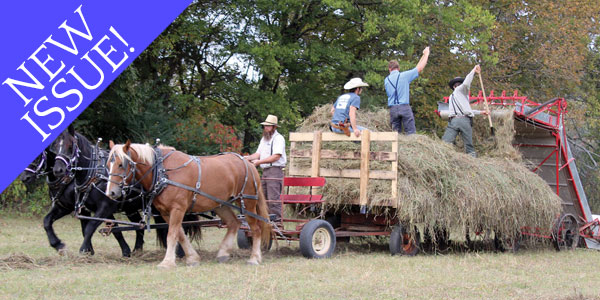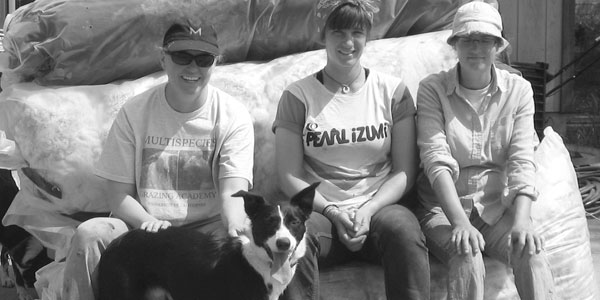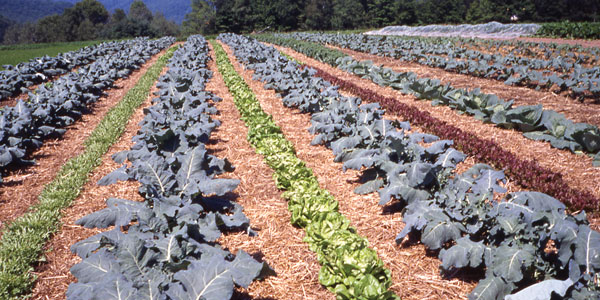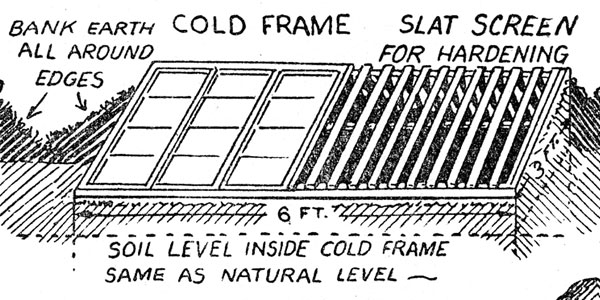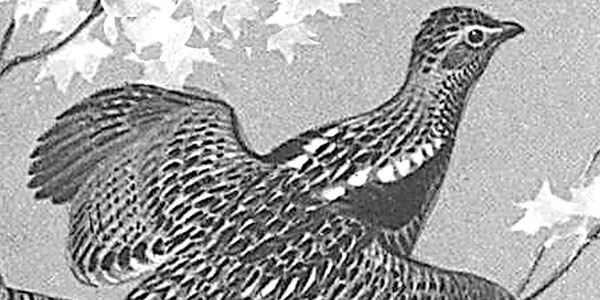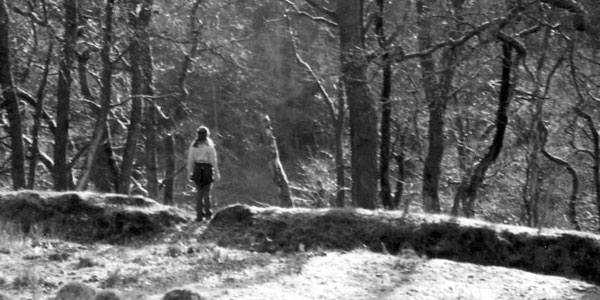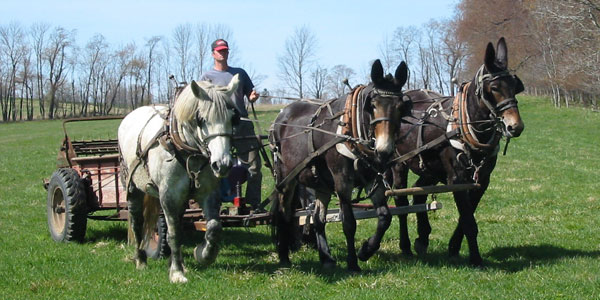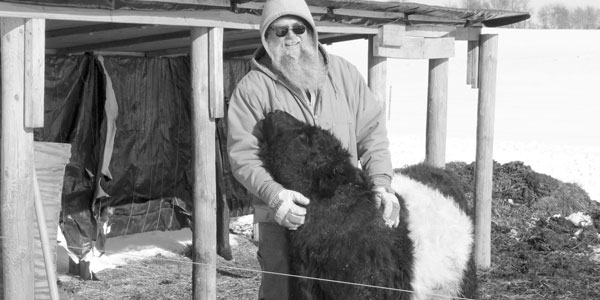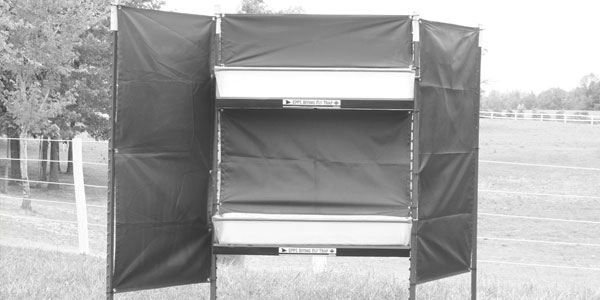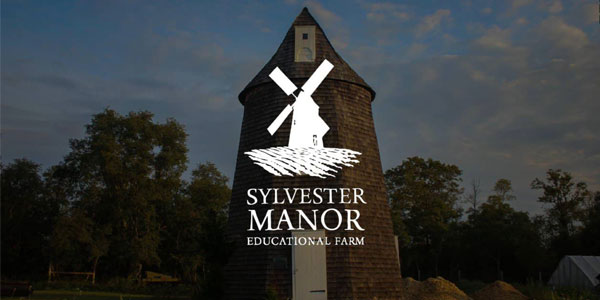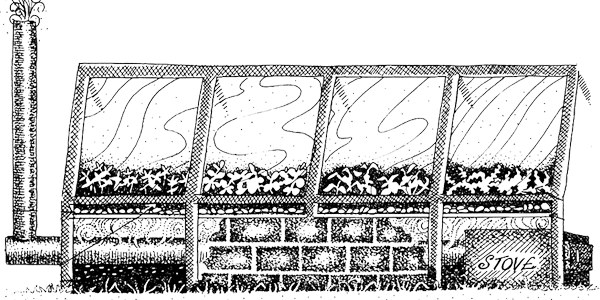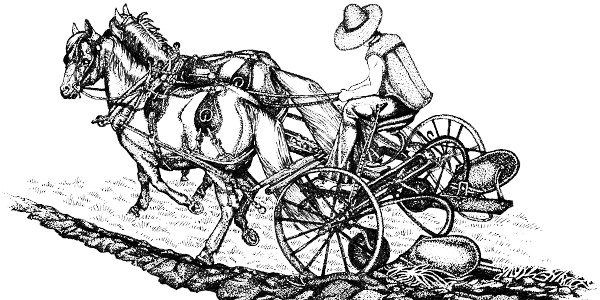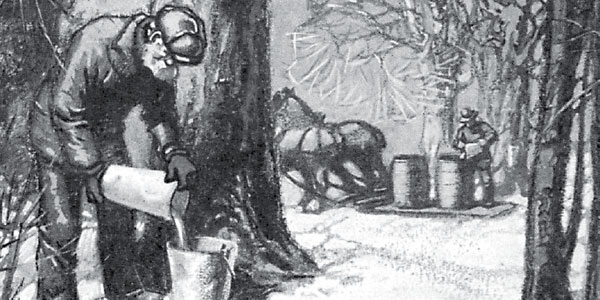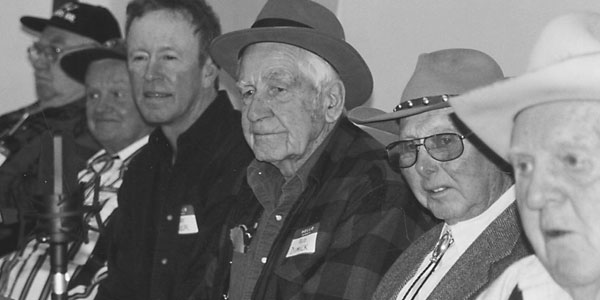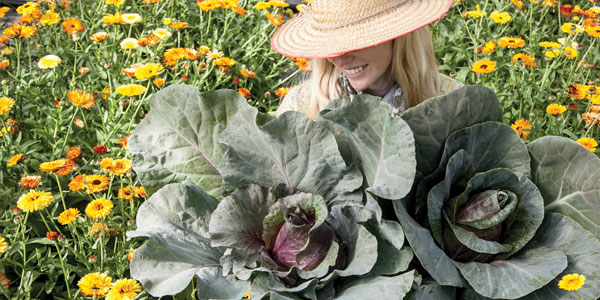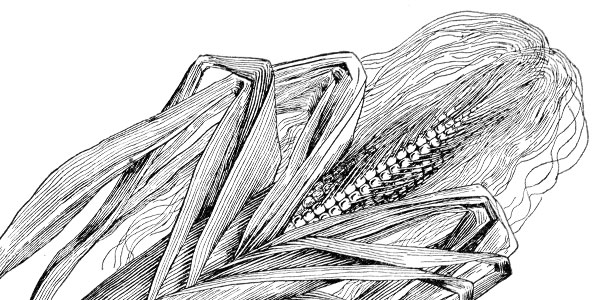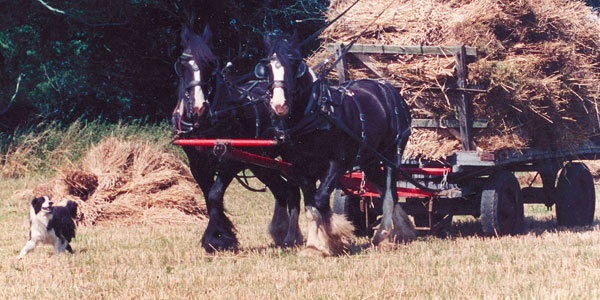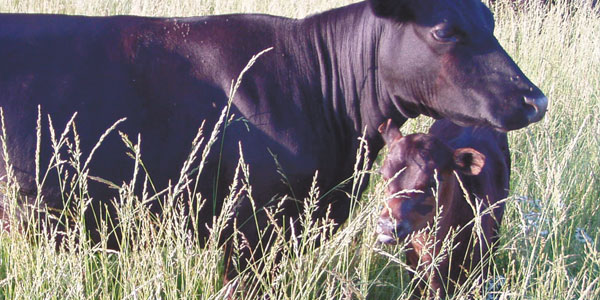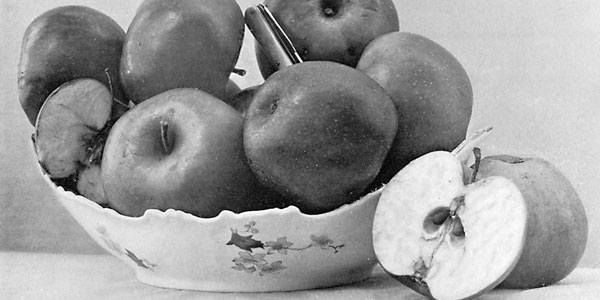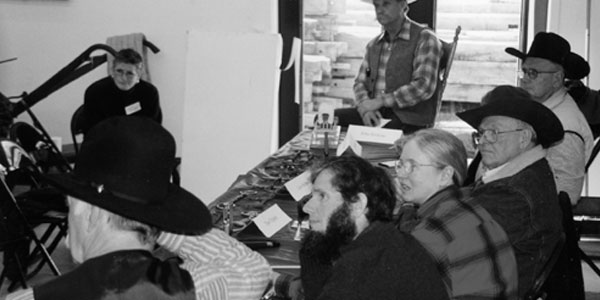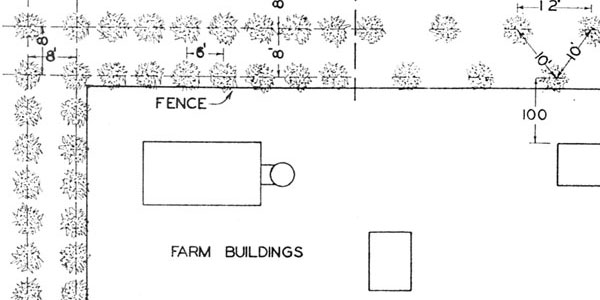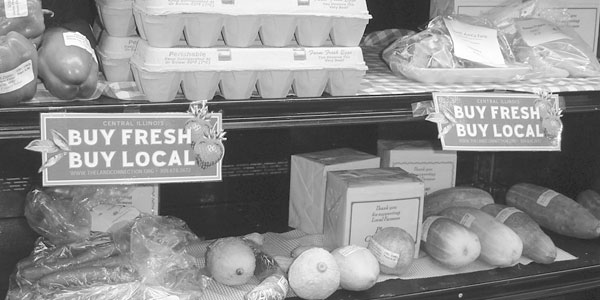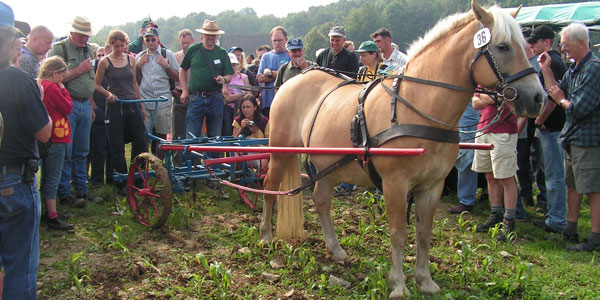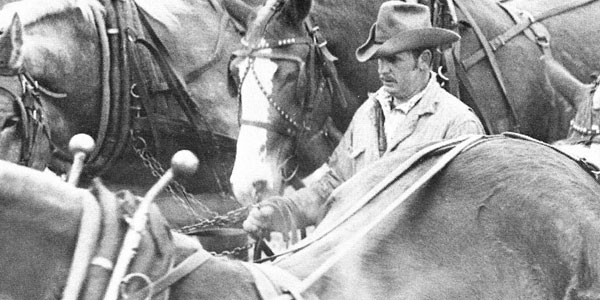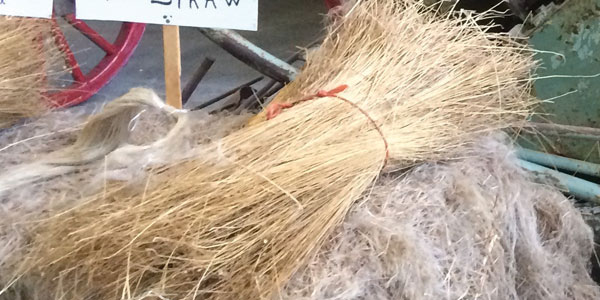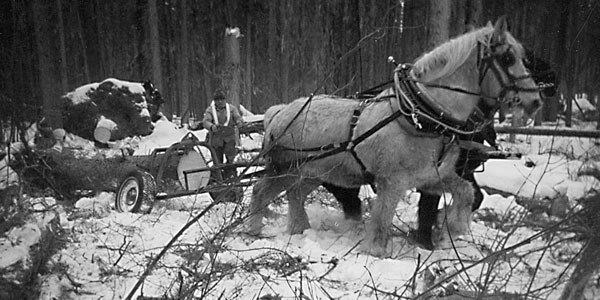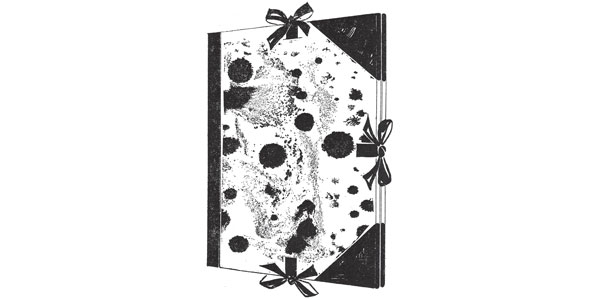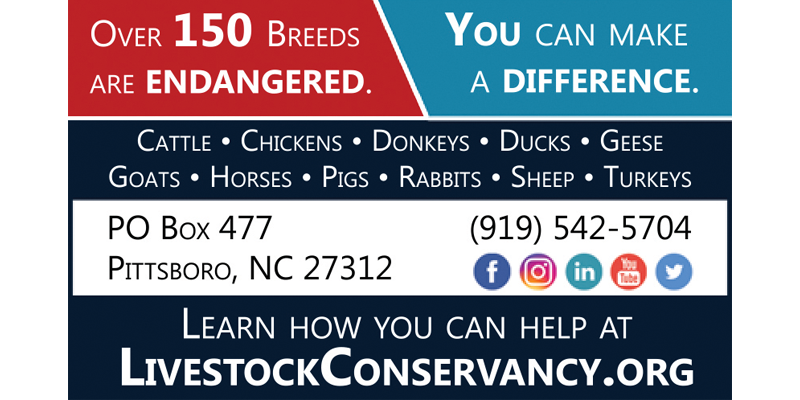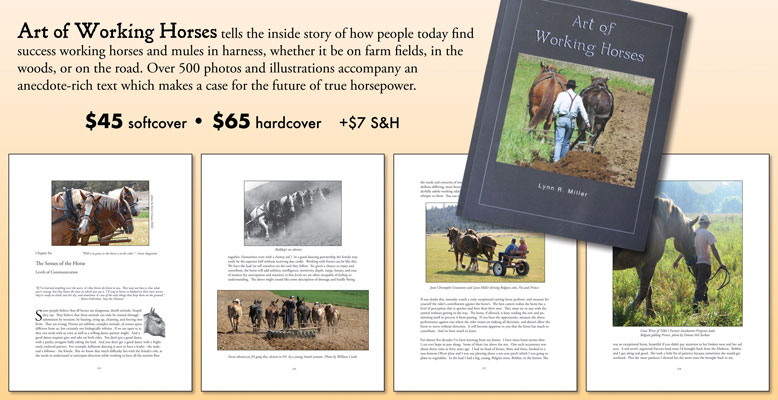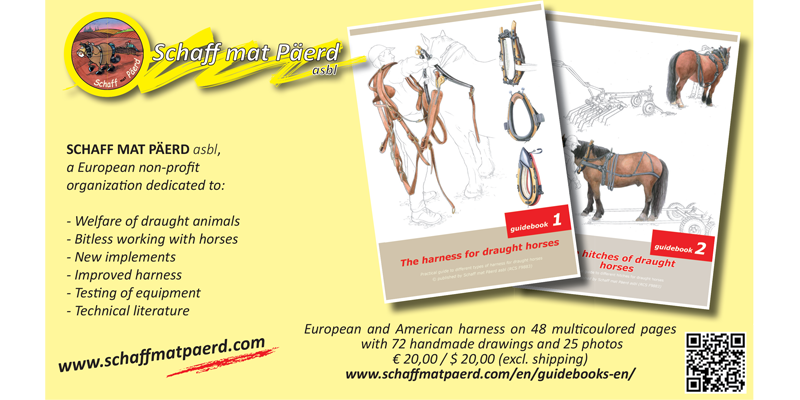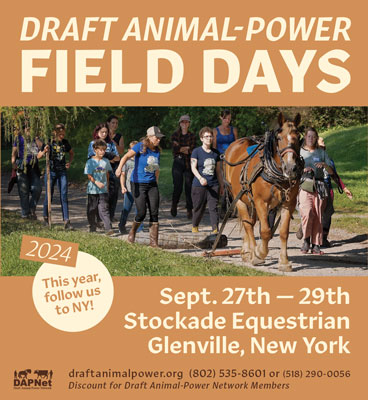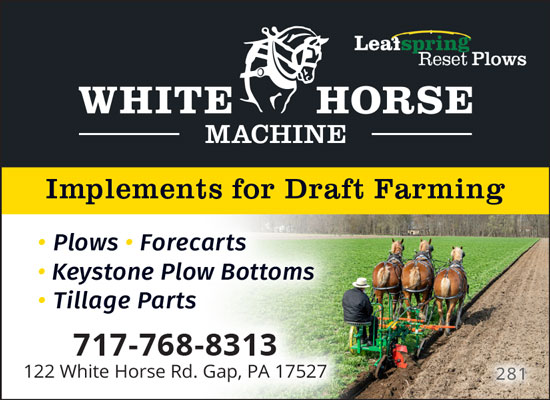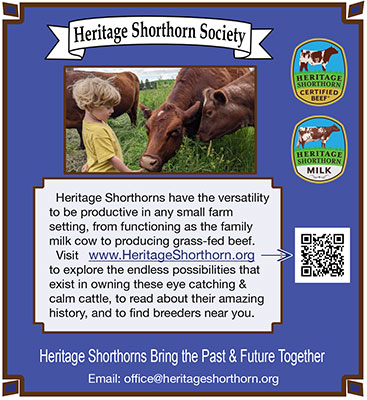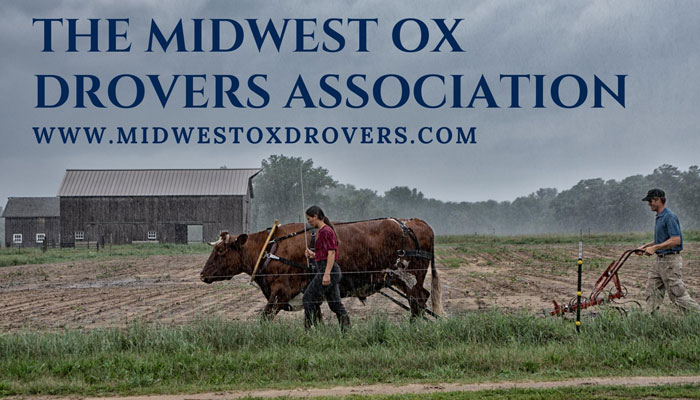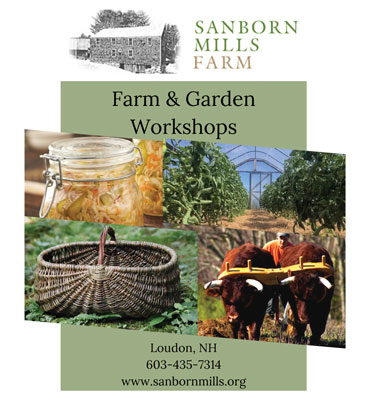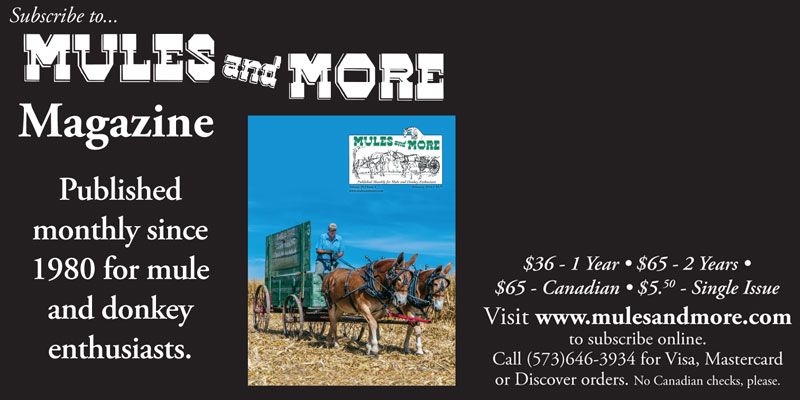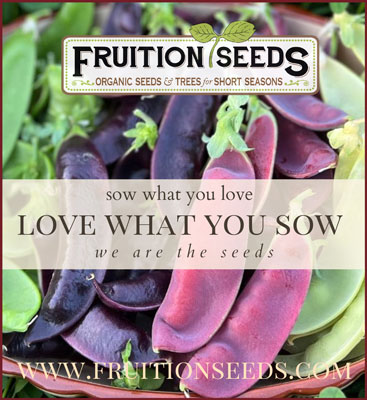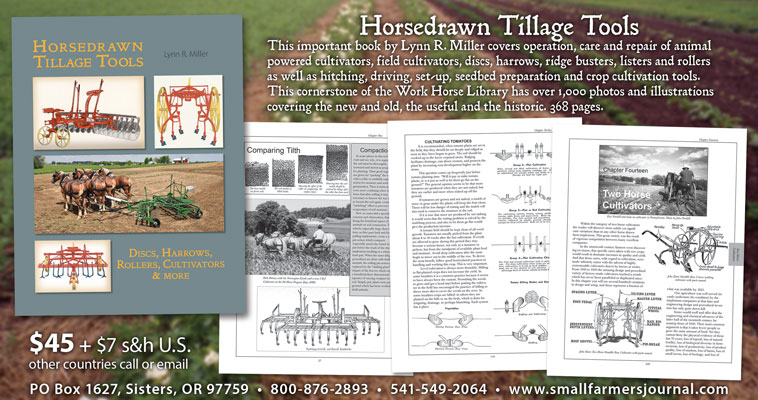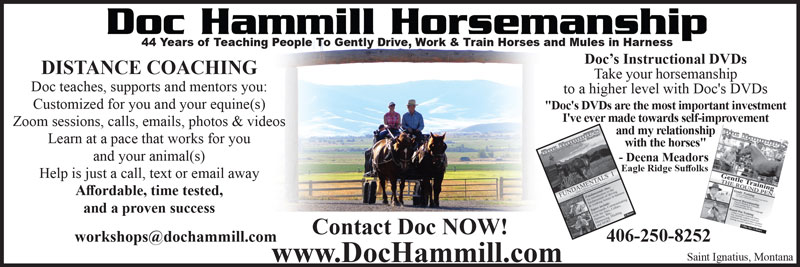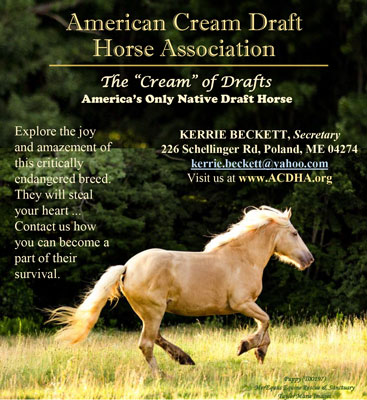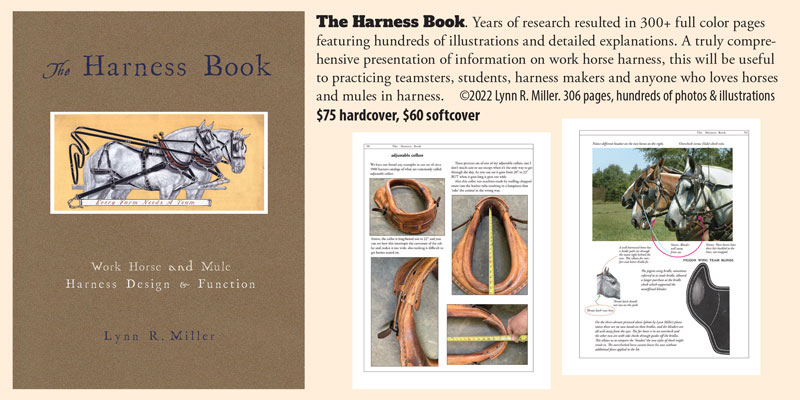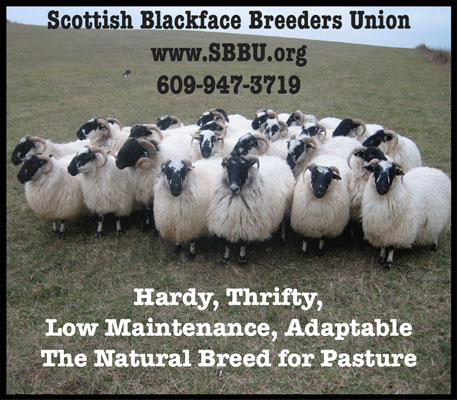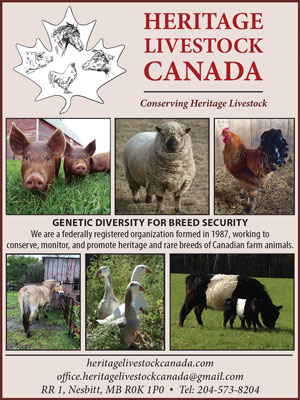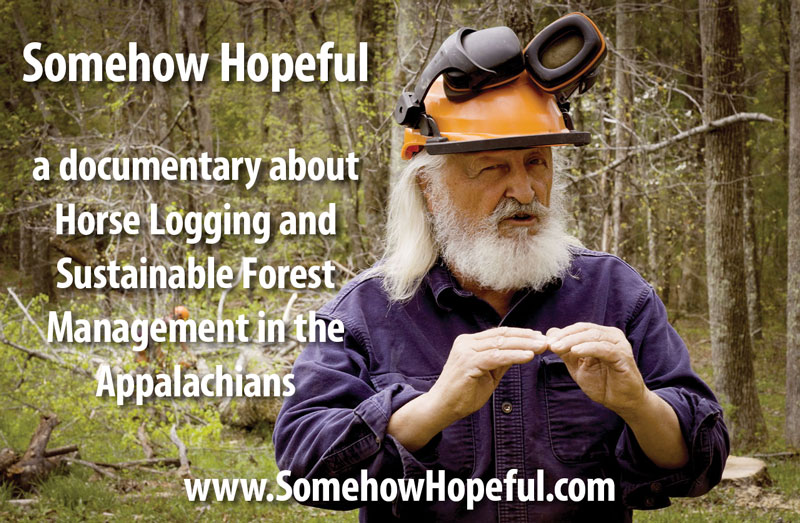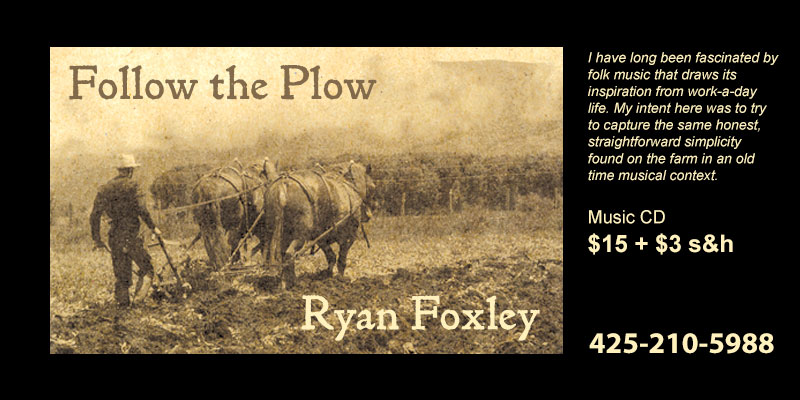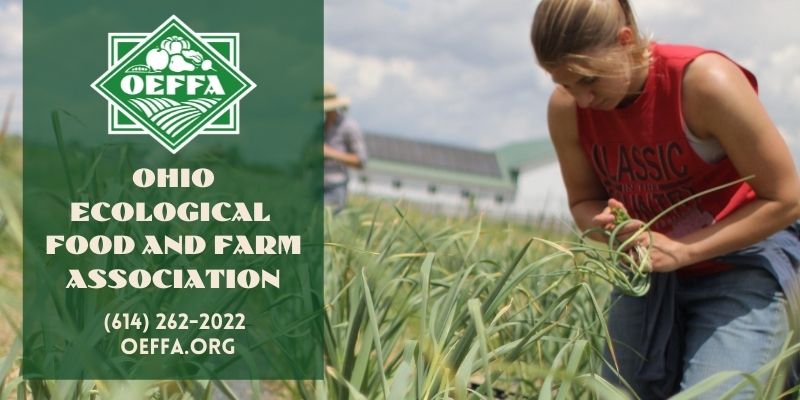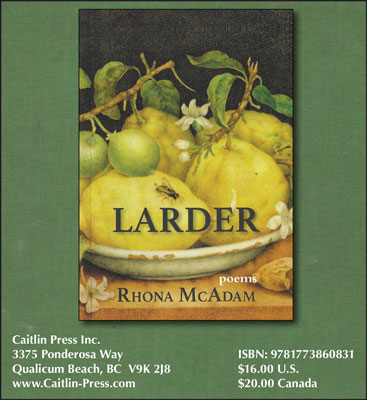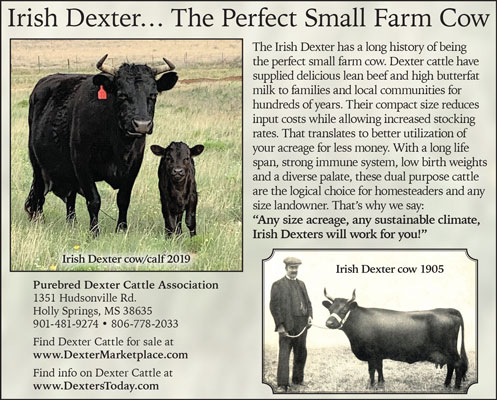MONDAY
April 15, 2024
Ground Driven PTOs
One of the ways tractors both gained and maintained their appeal is from the wider range of machinery they can power with the PTOs they carry. This definitely gave them the advantage over draft power. But is it going to stay that way? It may not have to be on a small farm. During the horsepower road trip Khoke and I went on a couple years ago, we got to see some examples from folks who knew which side of the fence they were on. We saw a number of machines that were reworked and reinvented to make them run off the power source of their choice, namely horsepower.
TUESDAY
April 16, 2024
Headlight Grape
One of the things long desired by Southern fruit growers is a good table grape, sufficiently resistant to leaf and fruit diseases to endure the climatic conditions of their section. Many varieties have been brought forward from time to time; but of the older sorts especially adapted to table use not one, either foreign or native, has yet proved successful over any large area. One of the most promising recent introductions in this field is the Headlight, which was originated by Prof. T.V. Munson, of Denison, TX, in 1895.
WEDNESDAY
April 17, 2024
John Deere Model HH Spreader
Check the adjustments on your spreader and make sure they are in proper operating condition. Hitch your team to the empty spreader to limber it up and see that it is working properly before loading. If you will turn the beaters over by hand before starting to the field, the spreader will start easier and will prevent throwing out a large bunch of manure when starting.
THURSDAY
April 18, 2024
Lost Apples
The mindboggling agricultural plant and animal diversity, at the beginning of the twentieth century, should have been a treasure trove which mankind worked tirelessy to maintain. Such has not been the case. Alas, much has been lost, perhaps forever. Here are images and information on a handful of apple varieties from a valuable hundred year old text in our library.
FRIDAY
April 12, 2024
Cedar Creek Plow Day
As a young boy I told myself that one day I would organize an event here in Tennessee to help the public get a glimpse of what we as horse and mule enthusiasts all over get to experience. Finally, this past October, a young boy’s dream came true as my wife and many friends came together to pull off the 1st Annual Cedar Creek Plow Day. We got to incorporate a lot of different activities using horses and mules at this event. I love new ideas in the direction of old ways and equipment from yesteryear.
Are you getting the SFJ Home & Shop Companion?
The Home & Shop Companion is a free weekly email newsletter. It features stories, handy hints, recipes, news, offers, projects, distractions and other stuff we think you’ll find interesting. The entire series is archived here on the website and is free to all to browse: Home & Shop Companion Archive.
SIGN ME UP FOR THE HOME & SHOP COMPANION!
Explore Small Farmer's Journal: Farming Systems & Approaches
Starting a Farm Internship Program
Farming and ranching internships seem to be the twenty-first century’s answer to the need for hands-on, person-to-person education on the art, science and business of sustainable farming and ranching. Well-designed internships can provide interns with basic skills and experiences necessary to make a start in farming as a profession. For established farmers, internships can provide an opportunity to foster and inspire a new generation of producers.
Horse Progress Days 2013: A View from Both Sides of the Clouds
As I drove south in a rental car from Champaign to Arcola, and began to transition into the landscape stewarded by local Amish communities, subtle shifts began to appear in the land use patterns. Of course, the first noticeable change was that the farms had horses – and lots of them – big drafts for work in the fields, saddle horses, trotters for the buggies, and minis and ponies to haul the kids around in carts and to give first lessons in the joys and responsibilities of horsemanship.
Cultivating Questions: Grow-Your-Own Mulch Part 3
To weatherproof more of the market garden in 2011, we tried a variation on the grow-your-own mulch system we developed for producing winter squash in the fallow fields. We discovered it was possible to mulch row crops like tomatoes, peppers, carrots, onions and leeks by moving windrows of rye into the pathways. Although awkward to handle at first, we soon got the hang of picking up an 8-10’ length of twisted rye straw in our arms and walking it from the fallow lands into the adjacent vegetable field.
Teamster’s Roundtable 2001 Part 3
One time I had a horse in there at the clinic and I asked Addy Funk to come out and take a look at it and I said, Addy, what do you think of this horse? And he looked it all over and I’m not sure but I think I had to ask him a second time what he thought about it. And all he said was, you can’t tell by looking at a frog how far he can jump.
Hotbeds
A good deal of the success with hotbeds is due to the careful selection of the manure. Cold manure, like that of cows and pigs, should never be used because it will not heat. Horse manure is best, but in this case at least one-third of the bulk should be straw. If pure manure is used, it will pack too tightly when firmed, so that it will not heat. If possible, the manure from grain-fed, straw-bedded horses should be used.
Starting Your Farm: Chapter 2
How do you learn the true status of that farm with the “for sale” sign? Here are some important pieces of information for you to learn about a given selling farm. The answers will most probably tell you how serious the seller is.
The Wheel Hoe: A Tool For Shallow Tillage
When we bought this little farm I soon realized I needed a wheel hoe. The size of the horse and tractor dictated space wasting wide rows in crop production and, to some degree, so does my two wheeled tractor.
The Forcing of Plants
It is always advisable to place coldframes and hotbeds in a protected place, and particularly to protect them from cold north winds. Buildings afford excellent protection, but the sun is sometimes too hot on the south side of large and light-colored buildings. One of the best means of protection is to plant a hedge of evergreens. It is always desirable, also, to place all the coldframes and hotbeds close together, for the purpose of economizing time and labor.
Partridge, the Northern Apple Grower’s Nightmare
Apple orchards suffer from a wide range of problems. The worst of all is not moose, deer, rabbits, voles, round-headed apple tree borers, sawfly, codling-moth, curculio, or scab. It is a bird, the ruffed grouse (Bonasa umbellus), known locally by the nickname partridge, which is the term I will use in this article. Partridge eat the buds of trees in the winter, and apple buds are among their favorite foods. They eat both leaf and flower buds, but leaf buds will regenerate the same year. Flower buds will not; they require two years in formation. If you lose all your flower buds, you will have no apples. Just one partridge is easily capable of “budding” an entire small orchard over the course of the winter.
Visiting the Prices in Wales
When my husband, Steve, showed the request for a pen pal to my daughter, Addie, five years ago, I could never have envisioned the experience that has just taken place. There in the SFJ “letters” section was a request from Owain Price of Wales for a pen pal. He was an 8-year-old, home schooled, farm boy, looking for someone to write to. Addie was experiencing a similar lifestyle across the Atlantic. Both sets of parents looked at it from an academic viewpoint, thinking what a great opportunity to practice writing.
A Tour of Various Draft Farms
Amidst all of the possibility that is out there, all of the options and uncertainties, it helps to remember that there is also a strong community in the draft-farming world. There are a great many like-minded yet still diverse people working with draft horses and ready to share their experiences. What will serve us well within this great variety of farms and farmers is to keep in touch, to learn from one another’s good ideas and mistakes and to keep on farming with draft power.
Rainbow Hill Farm
As Dennis and Sue Mengeling stand on the crest of their 130 acre farm, the land slopes down in all directions. As they look toward the north the Wisconsin River flows to the southwest. To the south is Voss Road and to the west County Road V and in the distance you can again glimpse the Wisconsin River. They look to the west and hope for rain in the next few days. This evening they will walk the perimeter of the farm, checking on fence and the cattle as they do several times a week. The farm was named because rainbows can be seen frequently on the knoll of the farm following a rain shower.
Reconstruction by Way of the Soil Part 2
The spread of the degradation of the soil was centrifugal from Latium itself outwards. Varro noted abandoned fields in Latium, and two centuries later Columella, about A.D. 60, referred to all Latium as a country where the people would have died of starvation, but for their share of Rome’s imported corn. The Roman armies moved outwards from Latium demanding land; victory gave more land to the farmers; excessive demands again brought exhaustion of fertility; again the armies moved outwards.
Idaho Horse Logging Short Course 1985
Roads and productive forests make horse logging efficient and economical. Horse logging is not at all uncommon in Northern Idaho. The University of Idaho in Moscow is therefore a logical place to conduct a Horse Logging Short Course. The University of Idaho also has a 7,000-acre experimental forest dedicated to experimentation and trial of new and innovative approaches to forestry. It is managed as a working forest producing about 2 million board feet of timber each year. Harold Osborne is the manager of the experimental forest and organizer of a two-day horse logging short course held in Moscow on October 11-12, 1985.
O Where, O Where have the Honeybees Gone?
Hundreds of new chemicals are released every year in the U.S., most of them with little testing. Furthermore, some chemicals that do get tested are tested by the company that manufactures them, in biased and unscientific conditions. Researchers on the subject of CCD are still combing through lists of newly released chemicals pertaining to agriculture, attempting to find ones that are used in countries that have CCD, but are banned in Canada, Mexico, France, and Italy. This type of research is more difficult than it might sound, because there is no one comprehensive list of all these chemicals.
Red Sorghum in Cameroun
In this part of the world, sorghum is roughly divided into the rainy season kind and the dry season kind. The rainy season kind is the typical red sorghum seen also in the US and called milo. There are many sub species in each category. The varieties allow farmers to harvest twice a year if they have the correct soil. The dry season sorghum requires a flat piece of mostly clay soil. During the rainy season, these flat fields are ploughed in a checkerboard fashion to make squarish ponds so the rainfall will soak into the soil and not drain away.
Environmentally Friendly Fly Control
The battle against flies is constant, but there are ways to reduce these costly and irritating pests — without toxic chemicals. There are several types of pest flies, with different habits and behavior, so a combination of tactics is usually most effective when trying to eliminate or reduce flies. House flies and stable flies (the latter are aggressive biters, tormenting horses and cattle) breed in manure and rotting organic matter such as old hay and bedding. Horse flies and deer flies breed in swampy areas and black flies breed in flowing water.
Farm to School Programs Take Root
Vermont has been a Farm to School pioneer, with a long history of engagement and partnership by farmers, school leaders, non-profit organizations, state agencies and local businesses. Farm to School in Vermont often advances a comprehensive agenda, working to integrate local food and farms into the cafeteria, classroom and community – or the “three C’s.” Around Vermont, various regional groups have emerged to work together around these goals and support the more than 200 schools with Farm to School efforts. Following is a series of three articles that describe farm to school efforts from different vantage points. All three authors live in Hartland, Vermont.
Sylvester Manor
Sylvester Manor is an educational farm on Shelter Island, whose mission is to cultivate, preserve, and share these lands, buildings, and stories — inviting new thought about the importance of food, culture and place in our daily lives.
Are Your Horses Working for You?
“Old timers” are fond of saying that all it takes are lots of long hours in the field, ‘get yourself and the horses sweatin’ and keep them that way.’ It is felt that most training challenges and glitches in the system will work their way out by long hard hours of work. There is certainly something to say for this. However, it is far from the only way. It is my contention, born of a quarter century of experience, that foundation training and good common sense system structure will give us better results. The horse who stands quietly and calmly when needed, regardless of whether he is tired or fresh, is the superior work mate. This is accomplished by well set training and trust.
Cultivating Questions: The Woodfired Bottom-heated Greenhouse Bench
It took several incarnations to come up with a satisfactory design for the bottom heated greenhouse bench. In the final version we used two 55 gallon drums welded end-to-end for the firebox and a salvaged piece of 12” stainless steel chimney for the horizontal flue. We learned the hard way that a large firebox and flue are necessary to dissipate the intense heat into the surrounding air chamber and to minimize heat stress on these components.
Small Farm Marketing
“Sooner or later the American people will have to start eating more food that’s grown closer to home,” asserts Maurice Norman, pick-your-own fruit grower from Hendersonville, Tennessee. His belief is shared by thousands of small farmers across the country who are changing the face of agriculture by growing and selling fruit and vegetables on a small scale.
Horse-Logging with a Scoot
From time to time, someone will ask me what method I use for skidding logs. My answer is: “Whatever fits the situation”. To me it is not about skidding logs, it’s about working horses in the woods. To that end, I have spent fifteen years logging, and learning how to employ different types of equipment that augment the efficiency of working animals. I have two logging carts, a bobsled, a set of bob-wheels, a scoot, and I have twitched many logs with a single horse, as well as with a team of horses, or oxen.
The Old Woodstove
The decision to put in a cook stove was actually not made quite so lightly. We try to minimize our use of fossil fuels if alternative energy sources can be found. For many energy uses, alternatives are readily available, but cooking is a tough issue. However, we all need to cook, and many of our foods don’t have the same nutrition if they aren’t cooked. Many are certainly less palatable. Solar ovens work well under the right temperature and culinary conditions, but early morning is not the right time or place to make granola in one. Solar electricity may be an option, but resistance heating eats up precious solar-produced watts faster than anything.
Getting Started Behind the Plow
Leo initiated the circle letter discussion on plowing in their very first letter. Already familiar with turning ground with the sulky, he asked for tips on taking the first steps behind the walking plow. The following advice may not be complete, but it is unique in that it combines the fresh impressions and lessons of teamsters who first put their hand to the plow this past year with the seasoned experience of those who have been walking the furrow half of their lives.
The Production of Maple Sirup & Sugar in New York State
Maple sirup and sugar are produced during a period of from four to six weeks in the early spring and interfere but little with the other farm crops. The sugar season usually forms a welcome break between the comparative idleness of winter and the early spring plowing. It comes at a time when little else can be done. But after considering the long hours of tending the evaporator and the work of gathering the sap, many a man has asked himself if the results are worth the effort. Most of the producers of maple sirup and sugar tap less than 500 trees. Considered from the point of view of the bookkeeper who figures overhead, depreciation, labor costs, and interest, very few of these small groves can show a profit. But is there anything that can be done to better advantage at that season of the year? Faced with such a question, nearly every farmer who owns a maple grove will decide that sugar and sirup making is worth while.
Cultivating Questions: Follow-Up On Phosphorus
We like to think that the bio-extensive approach to market gardening minimizes the risk of overloading the soil with nutrients because the fallow lands make it possible to grow lots of cover crops to maintain soil structure and organic matter rather than relying on large quantities of manure and compost. However, we are now seeing the consequences of ignoring our own farm philosophy when we resorted to off-farm inputs to correct a phosphate deficiency.
Teamster’s Roundtable 2001 Part 2
Last year we were going up on the wagon train and we were going up this real steep hill and I’ve got stay chains on my wagon, back to the wagon from the singletree and Lori was sitting there by me. There was a big team of Belgians ahead of us. They had stopped. They had played out. The guy had to take them off and Morris Elverud came back and pulled the wagon up the hill for him. Well, anyway, we were going up this hill right behind him and I told Lori I was just going let loose of these lines and see what happens. And that mare pulled that wagon herself up that hill. I didn’t let her go but for twenty or thirty feet but she’s just that type of a horse. So it all depends on what kind of horse you got.
Ruby and Amber’s Organic Oasis
The photos are of our farm, located in Dorena, Oregon. We have about 35 acres and grow certified organic vegetables, cut flowers, and plants, which we sell at the Eugene / Lane Co. Farmer’s Market and in our community supported agriculture program. In any one-year, we have about 2 – 3 acres in intensive production, the rest in cover crops, pasture, wild lands, etc. Although we have and use a tractor, we are doing most of the work with Ruby and Amber, our beautiful and willing mares who are both patient and forgiving with us.
Rabbits in the Northern Orchard and Forest
Winter is the time when rabbits become a problem. Trees are a favorite food when other sources are hidden beneath the snow. Rabbits will eat twigs and small branches in their entirety. They will girdle larger stock, up to about an inch and a half in diameter, to obtain the nutritious inner bark, but this is fatal to the rest of the branch or tree. And they walk on top of the snow, which reaches depths of over four feet here, giving them access to much of the young forest as food.
Cabbage Re-Imagined:
Plant breeding is, as Irwin Goldman observes, the slowest of the performing arts and this is particularly true for biennials like cabbage, who have evolved to set seed in their second growing season. In the autumn of 2016, as we embarked on crossing a purple cone-headed cabbage with a green one, we dug the roots and be-headed the stalks of about 100 cabbages. After overwintering in our root cellar, we re-planted each stalk in spring and if you’ve never seen cabbage go to seed, it’s quite astonishing. Each darling cabbage down at your feet sprouts a dozen or so spires rising five feet or higher, bursting into hundreds of blooms, canary yellow and cabbage-y sweet. Pollinators flock to the ruckus with long, green pods emerging from each pollinated flower. The sea of green pods turn to gold as the seed matures and we harvest them just as the first pods begin to shatter.
The Road to Better Corn is “Open”
Most farmers take it for granted that hybrid corn will yield more, acre for acre, than an open-pollinated variety. However, as advocates of OP corn have always been apt to point out, yield isn’t everything. OP corn is well known to be more nutritious than hybrid strains, having more minerals, free sugars, and protein and less plain starch. Even animals will almost always preferentially consume OP ear corn if given a choice between it and a hybrid. Moreover, the wider gene pool of OP corn makes it resistant and/or tolerant to a wider variety of microbial diseases and insect pests.
Jonathon and Fiona Waterer, British Horsefarmers
Arriving at Higher Biddacott Farm, after driving through the quiet enclosed lanes which wind their way up and down the hills of North Devon, you could be forgiven for thinking that nothing much happens here. But Higher Biddacott is a hive of purposeful activity, with horses coming and going, dogs running about, and people arriving for Bed and Breakfast, or to enjoy the Devon landscape from the back of a horsedrawn wagon.
A Guide to Raising and Marketing Rosé Veal
Here at Providence Farm, we produce what is referred to as “rosé veal,” though we aim to make clear that not all rosé veal is the same. Some rosé veal producers rear their calves in batches, housing them in open sheds on deep straw bedding, away from their mamas, and feeding them on milk or milk replacer, hay, and sometimes grain. We, however, use a more extensive method. Our calves are unconfined, and are born and raised on pasture. They spend their days as part of the cowherd, nursing from their mamas, cavorting with their fellow calves, and grazing on lush grasses and clovers at their leisure. They are never fed grains, nor do they receive growth hormones or antibiotics. It is for these reasons that we call this “Milk & Meadow Rosé Veal.”
A Business, or a Way of Life?
Many consultants and agricultural experts are trying to impress upon ranchers and farmers that our work should be a business and not a way of life, that in order to survive we must have better plans and become more businesslike: “Agriculture must cease to be a lifestyle and begin to be a business.” But farming and ranching can never really be just a business, for the family unit, as it is for big corporations. Yet, if we were to rely only on the “big guys” for our food, America would starve. We need the family farms.
Establishing Apples in the North Country
My apple orchard has only recently begun to bear fruit, but I have learned many things by the “school of hard knocks” which I wish I had known before. Perhaps these remarks may save some time and trouble for others thinking of setting out apple trees in a cold and demanding climate. Northwestern Maine, where I live, appears on the climate map as Zone 3, and area frost pockets even get down to -45 degrees F.
Small Farmer’s Journal 2003 Teamster’s Roundtable Part 1
I used to have a team of mares, a mother and a daughter, and they weren’t big horses but we worked them on the mowing machine. They got along just fine together but you put them with another horse and they were cranky with that horse. So what we did with them was we turned them all out together and said let’s find out who was boss and then when they established a pecking order then things smoothed out. The other thing that helped was we mowed a lot of hay with them. Whenever you get a few wet collar pads on them, it makes a whole lot of difference in attitude. They figure out there’s something else to do besides pick on each other.
The Farm Windbreak
Some windbreaks have failed because of the wrong selection of trees or because of the very location of the break. The full benefits of other windbreaks have been delayed many years, although a moderate amount of cultivation and fertilization would have made them serviceable much earlier. There is more to windbreak planting than just manual labor, and that is a carefully made plan which must precede the setting out of the trees.
Contributing More Than Calories: The Fairbury Local Food Project
In 2004, a small group of direct-market farmers began collaborating with the co-owners of the local, independently-owned supermarket in Fairbury – Dave’s Supermarket – to initiate an “indoor farmers’ market” inside the grocery store. The farmers wanted to provide Fairbury residents with food grown locally and without pesticides, while finding viable markets for their farm products in their own community. The supermarket sees the sales of local produce from local farmers as a public relations tool to continue to draw in customers and help support their local farmers. The business arrangement between the store and farmers is simple: the farmers stock the shelves with their local products, and the store advertises and provides codes for the products to scan through the checkout lines.
D Acres The Season Begins: Spring comes to Dorchester
Sugar season started a fortnight ago. The sap is flowing slowly, but steadily. Bright sunshine in the afternoons compliments nights well below freezing. With a few feet of snow still on the ground, it would seem that we are in for a long season. I have 112 taps in, with buckets hanging beneath each one. Our sugaring system makes use of strong arms instead of lines of tubing. Sap is stored in drums and buckets next to our simple sugar shack; inside the rickety door liquid gold is boiled down thanks to a rusty evaporator and four pans set atop the flames. Not the most efficient, but certainly effective.
Small-scale Peasant Farming in Transylvania
South of the impressive Magura-Codlei mountain and in the southeastern part of the Transylvanian basin lies the Romanian commune of Holbav. Although only twenty kilometers from the county capital of Brasov, traditional small-scale farming lifestyles have survived in Holbav to this day, forming living testaments to a resilient and successful circular economy of the local people. Of outstanding importance are the individual farms situated on the surrounding hills of the actual village center which is located on the valley floor. Each of the hills is farmed by one of the families – and has been for several generations.
Alfalfa and Alfalfa Seed Production on the Small Farm
The need for alfalfa (or other legume hay) becomes obvious to any farmer who is intent on lowering his input costs while maintaining maximum production from his land and livestock. Yet often overlooked is the opportunity to produce a valuable seed crop as an alternative cash crop. Production of alfalfa for forage and for seed go hand in hand and is easily accomplished on the small farm.
Goats Save the Ranch
Eating invasive vegetation that compete for the scant water supply and inhibit the growth of grass, goats are a biblical-age solution to a modern-day scourge. To restore the land, 1,300 goats mimic the buffalo herds that once grazed the region – breaking the soil’s crust, stomping decadent grasses, knocking over dead trees, fertilizing with their droppings and embedding seeds. And, all the while, the goats voraciously defoliate and ultimately kill the water-guzzling Tamarisk.
A Potato Story
In our region, which is highly urbanized and industrialized, many basic connections with regard to food production have literally been lost. Many people no longer know where their food comes from and the majority of the food produced in the small town of Lorsch is not consumed there. It is produced for the “global market” and does not find any added value in the community itself. This goes along with the fact that the regional and local infrastructure has gradually collapsed. There is a lack of local processing facilities for food: often products have to be transported many kilometres before they can be processed at all.
Agri-Tourism: Farm Visitors Can Be Your Key to Success
Increasing numbers of family farms are unlocking sustainable income through Agri-tourism. These events bring visitors to tour working farms. Not only do your guests enjoy a day in the outdoors, but they go home with a new understanding of life and work on a small farm. At the end of the day Ag-tourists go home with bags, boxes and buckets of delicious home-grown delights, perhaps picked with their own hands. Agri-tourism events are in high demand all around the country. This growing industry provides good reasons for you to consider an agri-tourism project for your small farm.
San Francisco Ranch
The ranch consists of several thousands of acres; the horse are used to farm 555 acres. Last Fall 25 acres were plowed. So far this Spring they had worked up 200 acres with horses. The main part of the farming is done with horses. A tractor is used to clean corrals and bale hay. The hay is cut with a swather. All hay hauling is done with horses. 16 head of horses are used every day. 24 horses are available to work. Pete uses an 8 horse hitch. With green horses, he rotates them in half days at a time in 3 to 6 day intervals. There are 47 head of registered Belgian horses, 2 pair of geldings and some grade horses. Add in the saddle horses and the total equine count comes to 105.
The Flax-Fiber Revolution
Flax is a native species of the Pacific Northwest and was widely used by Native Americans for basket weaving, rope making, and clothing. With the coming of Europeans the flax industry began to flourish around 1868 when numerous flax mills were established in the fertile Willamette Valley. These mills produced high quality linen, linseed oil used for paints and finishes, oil cake for cattle feed, as well as twine and rope, among countless other products.
Cultivating Questions: Cultivator Set-ups and Deer Fencing
We know all too well the frustration of putting your heart and soul into a crop only to have the wildlife consume it before you can get it harvested let alone to market. Our farm sits next to several thousand acres of state game lands and is the only produce operation in the area. As you can imagine, deer pressure can be intense. Neighbors have counted herds of 20 or more in our pastures.
The Woods Betrayed
What of the squirrels, grouse, frogs, mice and fur bearing animals that call this home? They were betrayed by the ones who studied them, lived off them to either be trampled by the machines or try to find a new home as winter set in. Their food supply and homes are gone forever so may many of them be gone forever. What greed does to us!
An Introduction To Farm Woodlands
The farm woodland is that portion of the farm which either never was cleared for tillage or pasture, or was later given back to woods growth. Thus it occupies land that never was considered suitable, or later proved unsuitable, for farm enterprises.




